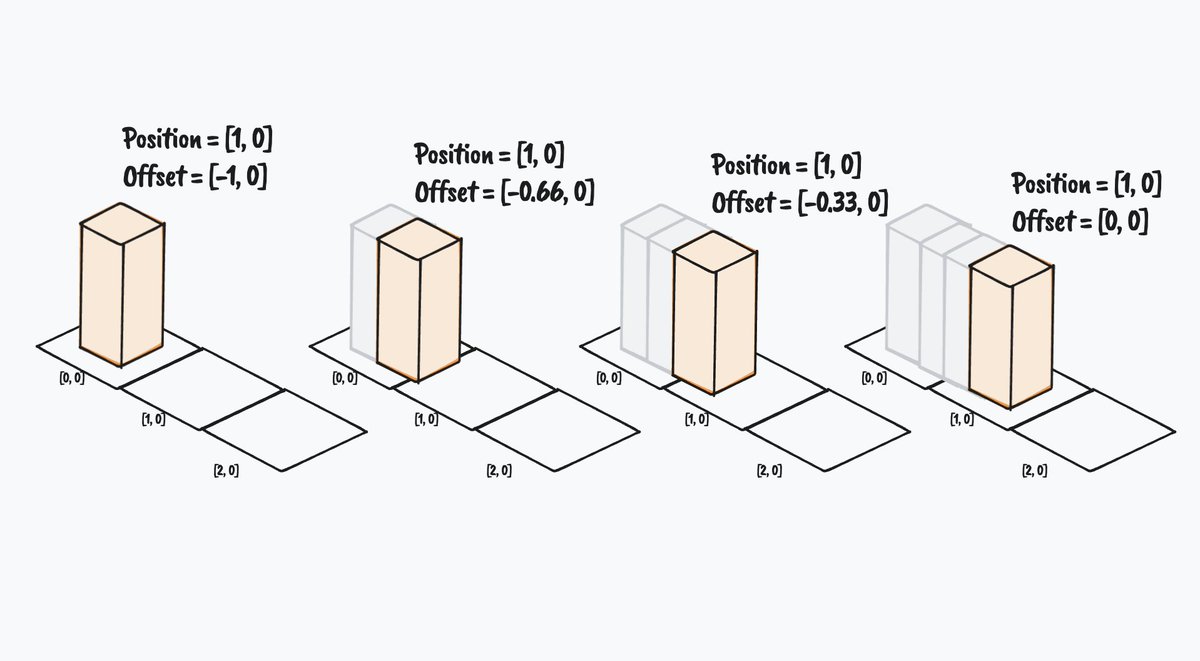path finding + smarter animations
What do I mean by smarter? Let's say each of our blocks has a position in a grid, [x, y]. (It's actually a 3D grid, so [x, y, z], but we can ignore the z for now) 

The positions map to the block's index in z/y/x arrays. This means that a block's position can only be an integer like 1 or 2, but never a float like 1.25 or 2.81.
So a position like [0, 0] is fine but [0.5, 0] is not.
So a position like [0, 0] is fine but [0.5, 0] is not.

The (very old) trick is to give the block an "offset" and then find the block's "draw position" by adding the two together. In the image below, both blocks have the same "position" but the one on the right has an offset that causes it to "draw" at a different place. 

So to animate a block, the process is:
1) move the block to its new position,
2) set its offset so that it draws at its old position...
1) move the block to its new position,
2) set its offset so that it draws at its old position...

Throw in some delay after each animation cycle and you've got your animating blocks!
• • •
Missing some Tweet in this thread? You can try to
force a refresh






